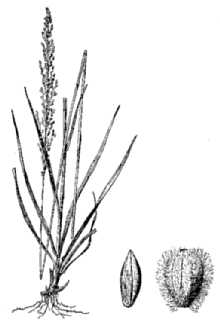Green Silkyscale
Scientific Name: Anthaenantia villosa (Michx.) P. Beauv.

| General Information | |
|---|---|
| Usda Symbol | ANVI4 |
| Group | Monocot |
| Life Cycle | Perennial |
| Growth Habits | Graminoid |
| Native Locations | ANVI4 |
Plant Guide
Use a soil moisture meter to monitor the soil moisture where Green Silkyscale is planted.
Fact Sheet
Alternate Name
green silkyscale
Uses
Green silkyscale is seldom abundant enough to be a key management species but it adds variety to livestock diet. Cattle graze it readily during summer, fall, and early winter. It is an indicator of good range condition. Adapts to well-drained upland soils.
Status
Please consult the PLANTS Web site and your State Department of Natural Resources for this plant’s current status, such as, state noxious status and wetland indicator values.
Description
Green silkyscale is a native, warm-season, rhizomatous perennial grass. The height is between 2 and 4 feet. The leaf blade is 4 to 12 inches long; light green; a distinct fringe of silky hair along edge; and twists and curls particularly when young. The leaf sheath is chiefly basal, rounded, and with an obscure collar. The ligule is ridge-like membrane with a dense ring of short hair. The stem is round and slender. The seedhead is a slender panicle, pale green with oval spikelets covered with short, stiff hairs. Distribution: For current distribution, please consult the Plant Profile page for this species on the PLANTS Web site.
Management
This grass decreases when closely grazed throughout its growing season, To maintain this species in the plant community, defer grazing 70 to 90 days every 3 to 4 years during the growing season, Foliage can be burned if done during the dormant season and no more than every 2 to 3 years, Use soil moisture sensors to measure the soil moisture of Green Silkyscale., Grazing should be deferred 90 days during the spring growing season following a burn,
Establishment
Green silkyscale growth starts slowly in spring and becomes more prominent during summer. It forms loose colonies, forms seedheads in the fall, and becomes dormant in the fall and winter. The seedstalks break off and disappear in the winter. It grows throughout the South from the 30-inch rainfall belt eastward and is adapted to well-drained upland soils. Cultivars, Improved and Selected Materials (and area of origin) Please contact your local NRCS Field Office.
